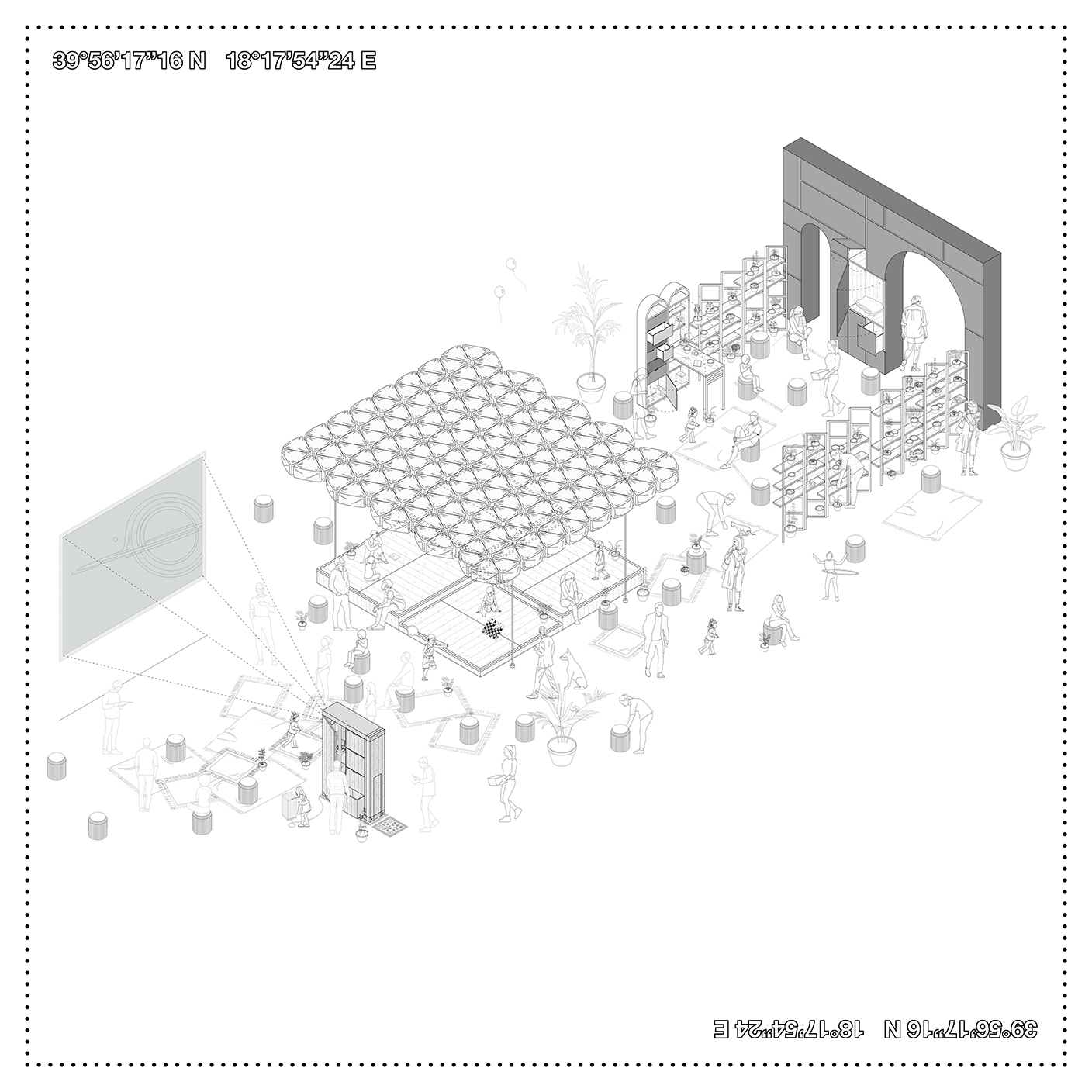What is the square, if not a place for meeting and sharing? “The square is...” means to affirm (or reaffirm) just this characteristic inside spaces (squares, widens, etc.) unused and abandoned. A strategy that sees as a protagonist the urban space and the people who live in it with the aim of mending relationships and cultivating practical forms generating opportunities for meeting, exchange and dialogue.
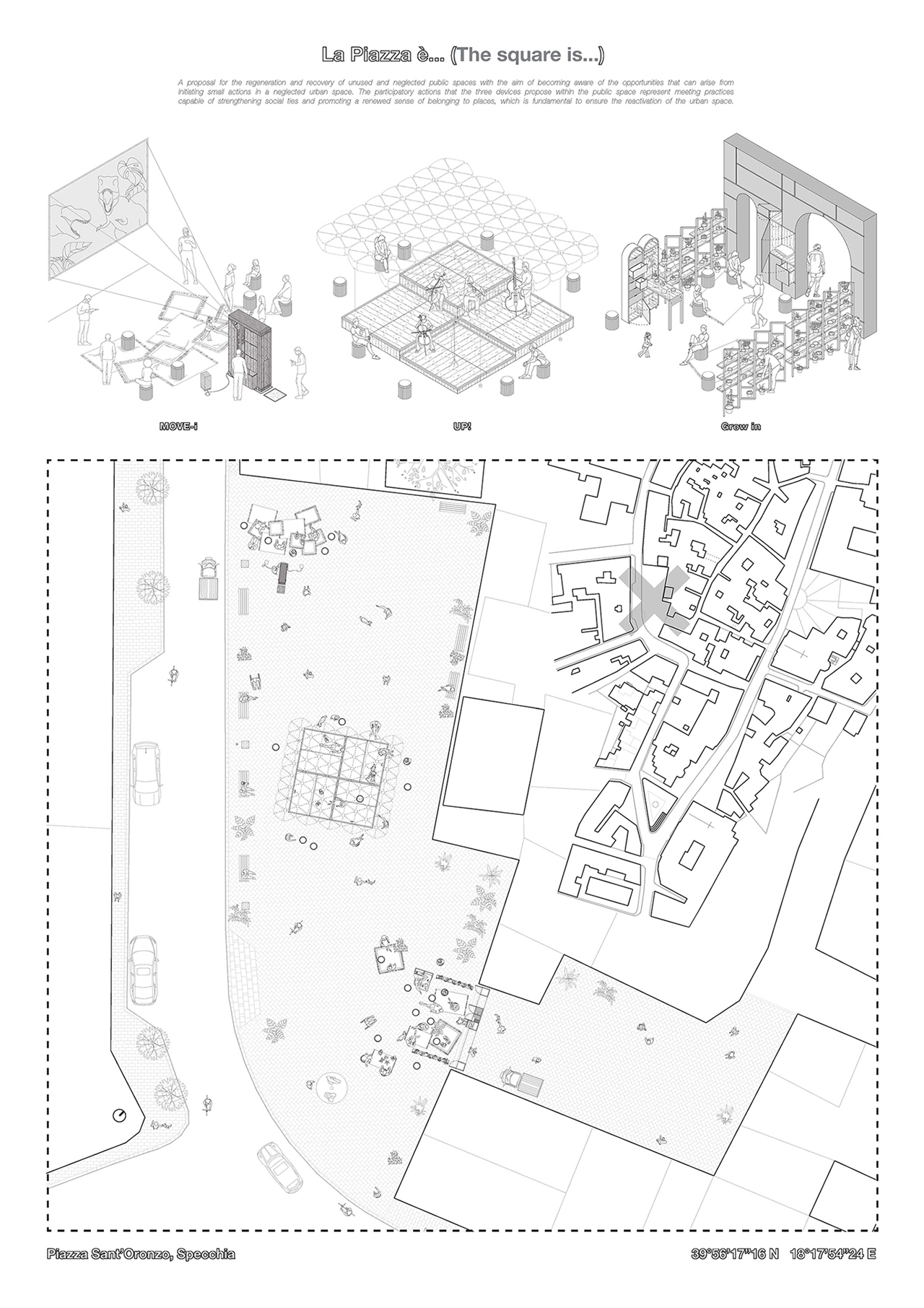
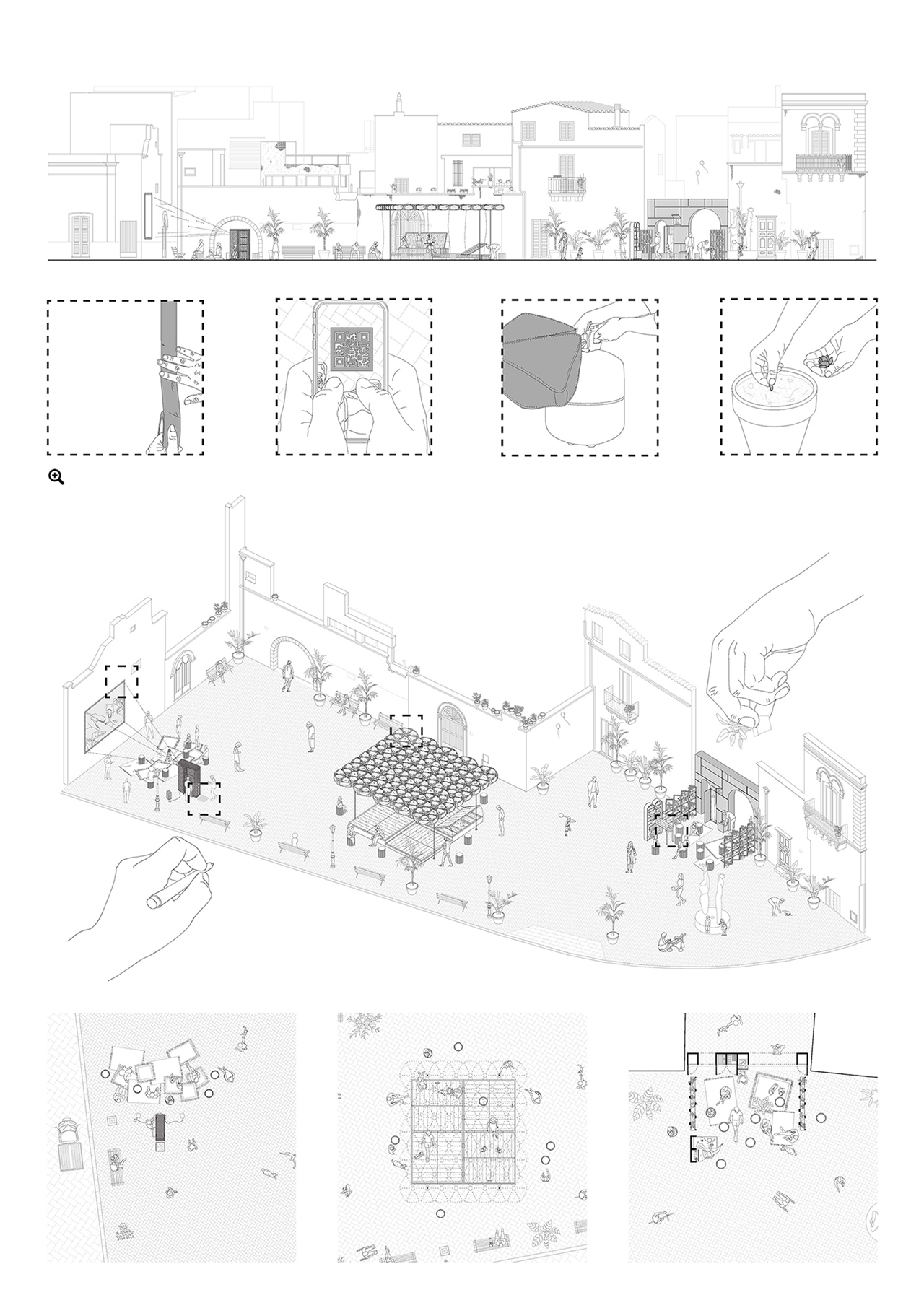
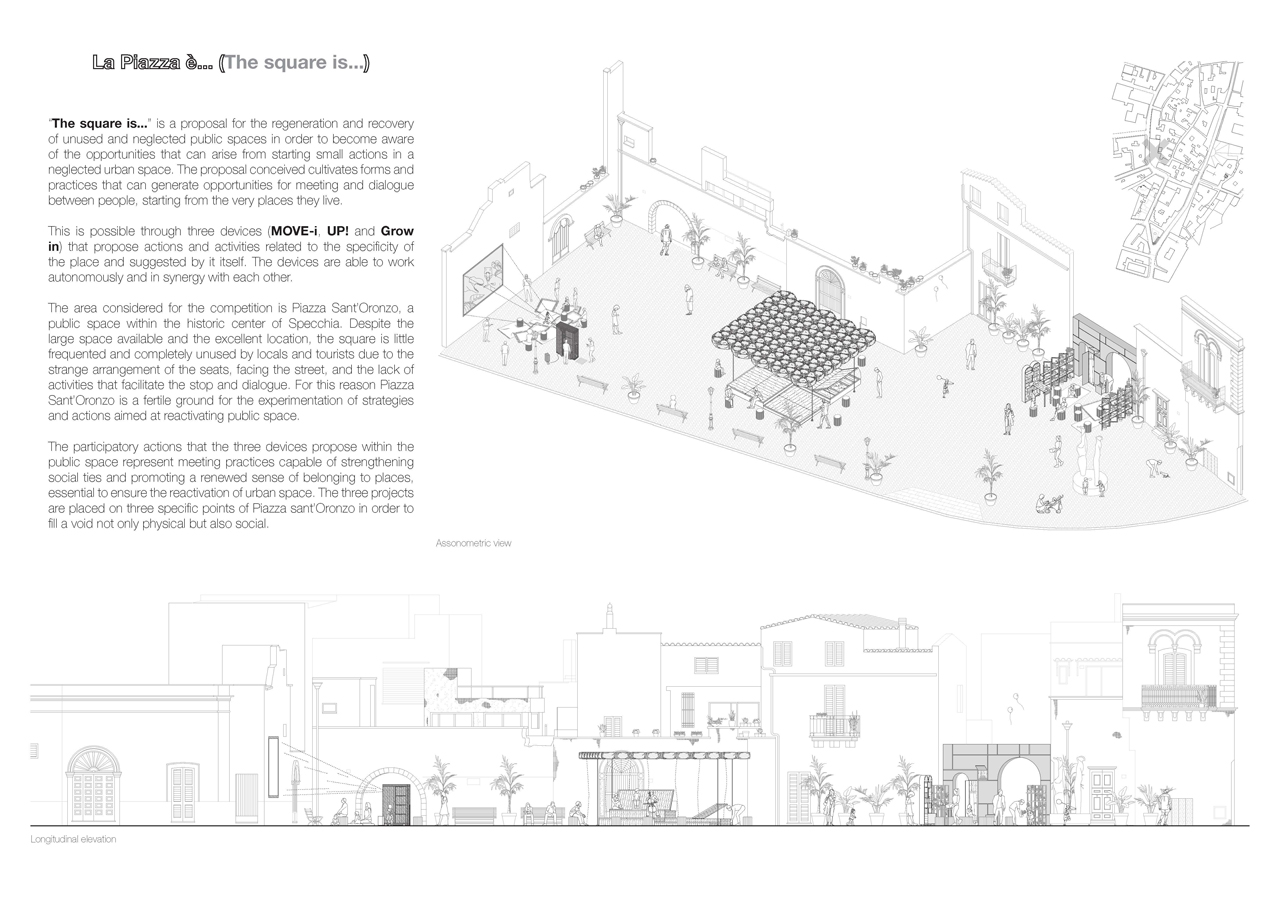
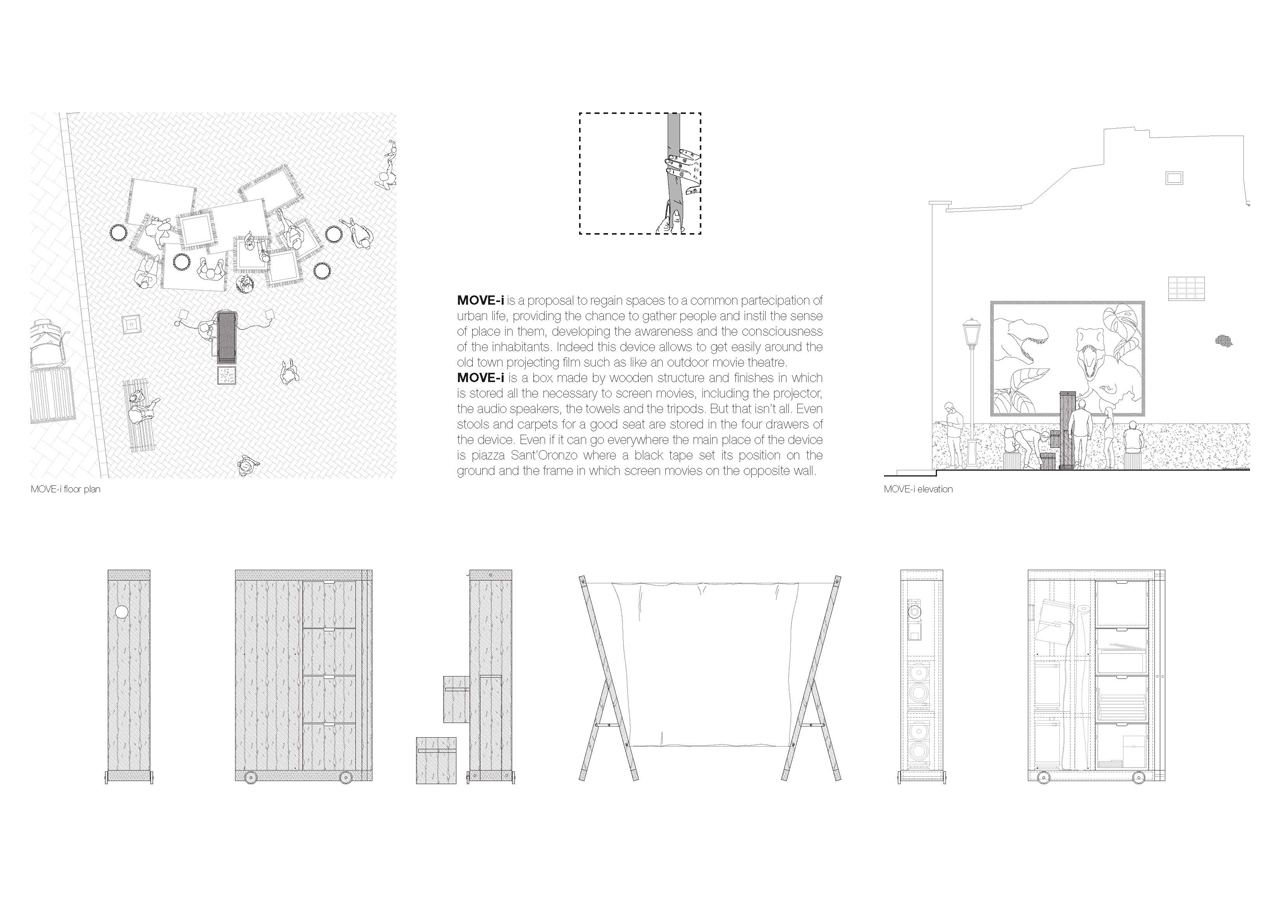
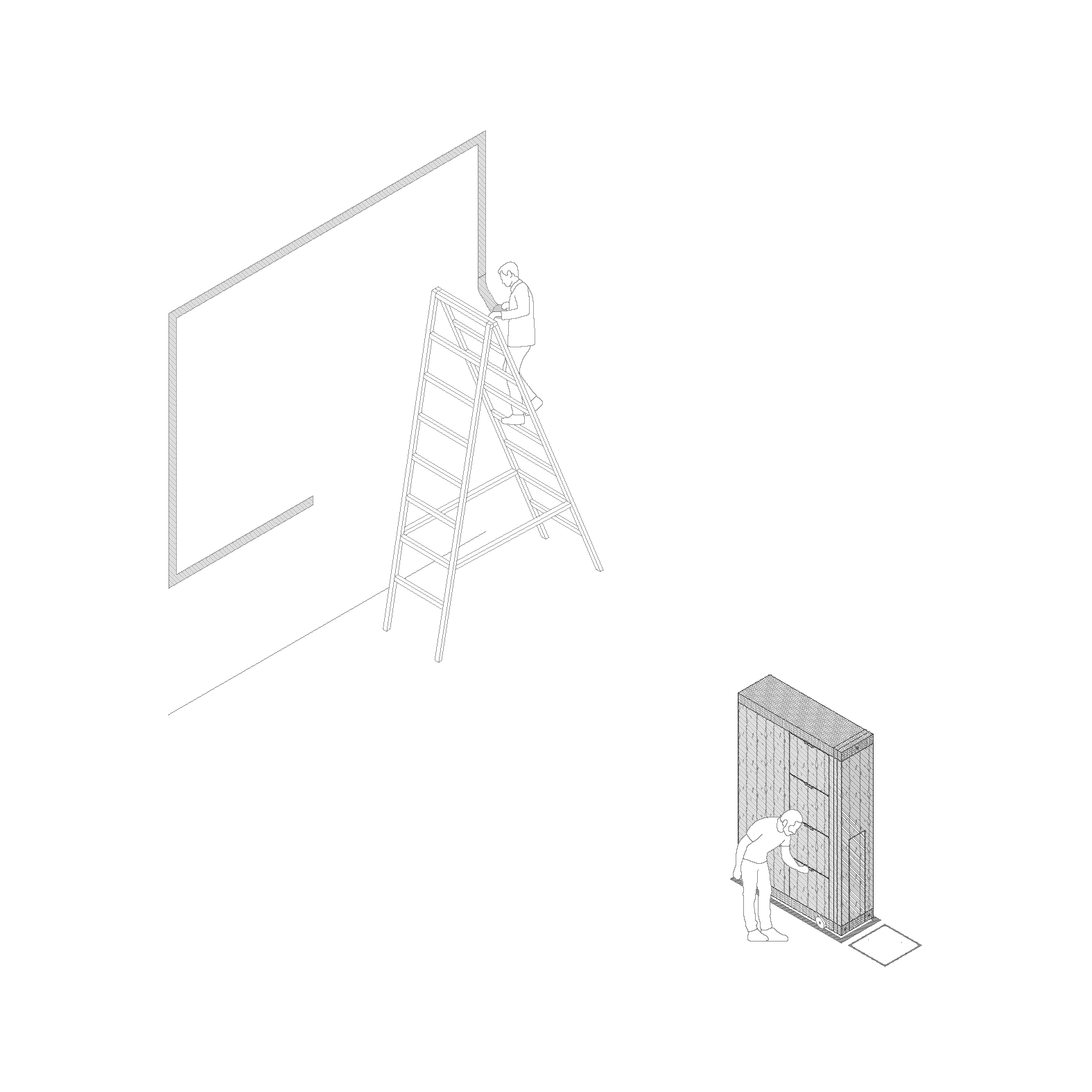
The Site and the Neighbourhood
Specchia is a rural village in Southern Italy, with 4600 inhabitants over an area of 25 sq. km.
The town stands in the Apulian region of Salento, inland but fairly close to the seaside and rich in historical, architectural and cultural heritage, being consequently a sought-after destination for tourism.
It was probably built in the Middle Age by shepherds and rural people who were looking for shelter from the raids of Saracens pirates who sailed the Mediterranean Sea, but other sources talk about the Byzantine persecution that forced many monks to take refuge in Salento. Then, during the Norman domination, Specchia was ruled and owned by several famous feudal families, which expelled the “Orientals” even if their culture was tolerated. In the first half of the Fifteenth century, Specchia had been sieged and its Norman castle destroyed after being conquered. Just a few years later, the fortress and the defence walls had been rebuilt to give shelter to inhabitants of the coasts threatened by the feared Turks that in 1480 conquered the near Otranto town. Today the Castle is known as Palazzo Protonobilissimo Risolo, the result of several modifications that occurred until the Eighteenth century, and it faces Piazza del Popolo. This is the biggest and most important square of the town, lined by the “Matrice” Church as well as the Baronial Palace, an expression of the relationship between civil and religious power.
Specchia rises on a hilly slope that modelled the historic core and the consequent urban sprawl, even if in more recent times it has been extended radially on a regular grid. There are other open spaces outside or on the edge of the old town, quite similar to squares but actually without being properly so.
These historic settlements of the Salento recently obtained the awards as “Borgo più Bello d’Italia,” as “Gioiello d’Italia,” and it appears in many touristic guides. As a matter of fact, numerous are festivals and celebrations that attract tourists during the year, but not only for that. The palaces, the churches but the craftsmanship and the countryside belong to the local heritage too.
The Design Proposal
The project, looking both at the inhabitants and the tourists, aims to cooperative participation and involvement of people who live and make the experience of Specchia. The old little settlement of Salento inland has different kind of open spaces more or less in need of some re-activation, junk-spaces or even resulting from the demolition of a building. This is the case of Piazza Sant’Oronzo, on the edge of the old town, along the South-Western side of Guglielmo Marconi Street. Before the present condition there was a covered municipal market no more useful in that position, and now there is just a wide void. We see an actual lack, nobody and nothing is there, nothing but the warmth of the Sun and its bright reflection on the white stones which everything is made of there. Anyway, on the square’s boundary, many benches overlook the street, and in the corners between the buildings stand just some urban planters.
After a look at this place, we wanted to insert something that could be a generator of chances, several chances. Thus, we figured out three different devices whereby it could be possible to occupy Piazza Sant’Oronzo and consequently promote the sense of place through the meetings.
The first one has been suggested by the wide white wall on the Northern side of the square, looking like a projector screen. And so, it is. A black tape frame identifies the area wherein screen movies by a projector stored into a wooden box. MOVE-i is whatever an outdoor movie theatre needs. Indeed, inside the box are hosted in addition to the projector, which held radiates the light emission through a hole in the frontal wall, the audio speakers to set outside the box during the projection, and carpets and stools for the spectators. Anyway, this device can move in other places, and there use the inside-stored screen towel for projection and the tripods hung on the back of the box. In this way, it offers participation to a film club everywhere through the settlement, particularly inside the old town.
The second one, inspired by Piazza del Popolo activities, provides a more intimate and neighbourhood gathering place where it could be possible to play music or drama, or much more. UP! is both a podium and a roof. Four elements of different heights compose the podium, useful to a stage or a seat. Helium-filled balloons compose the roof. The first thought looking at the square was that there wasn’t anyone due to the excessive exposure to sunlight and heat, so it has been interesting to provide a solution covering the area with an ephemeral roof. This device can move too, finding another square to set up, obviously with less frequency than MOVE-i.
The third one has been developed in the light of the phytosanitary emergency caused by Xylella Fastidiosa that threatens olive trees – relevant subjects of the local heritage – trying to raise awareness through meetings and lessons about good agricultural practices. Grow in is a painted wooden portal that leads from the edge to the closer old town, so from Piazza Sant’Oronzo to Piazza del Popolo across alleys, through a space of inclusion, interaction and collaboration that looks like a little garden. Though it is an ephemeral construction, unlike the previous devices, this is the least movable.
All the devices are provided with a QR-code that allows knowing the schedule of the activities, especially of MOVE-i screens, and the information related to the different devices.
The Jury
“The project is versatile and adaptable for different uses; it can also be the factor to engage various associations joining thanks to the hypothetic co-management of each installation for different activities.”
“The non-exclusivity to the square is fancy as a way to promote activities around the neglected space and interact with the surroundings. The interaction with the citizens through digital and analogic tools with activities makes the project multifarious.”
“There is an intention of reusing locally built elements and its specificities in benefit of the project and its adaptation to a specific regeneration of the site enhancing its interaction possibilities with the community.”
